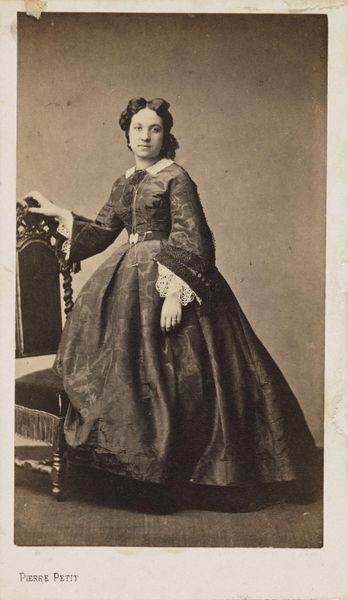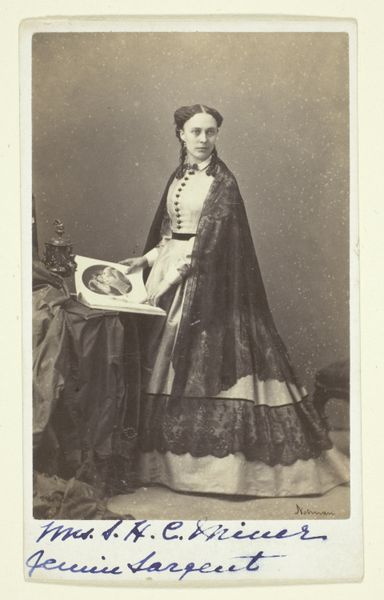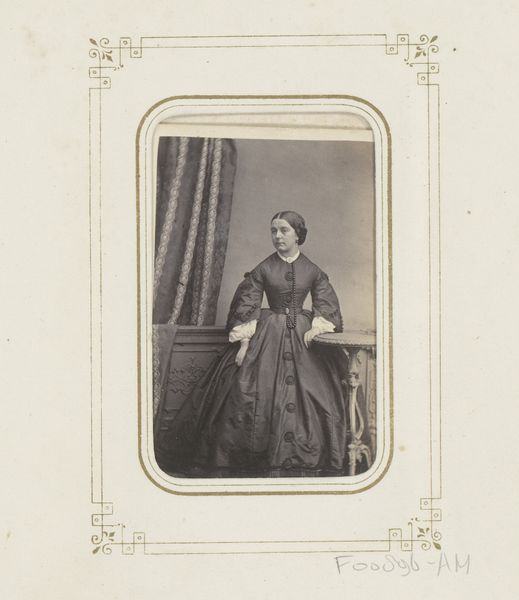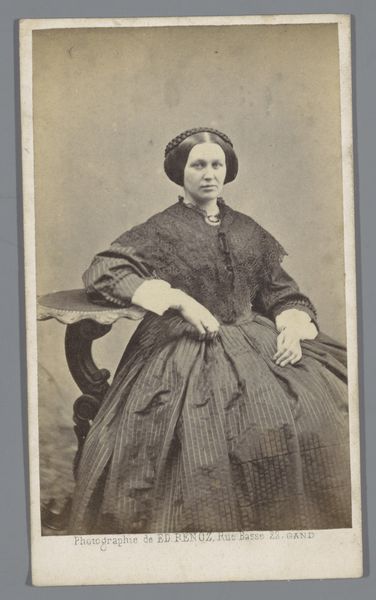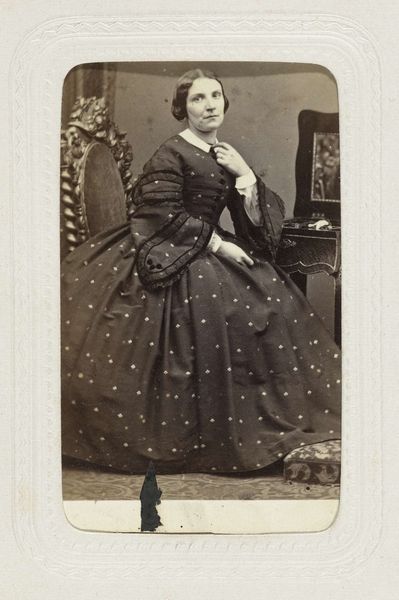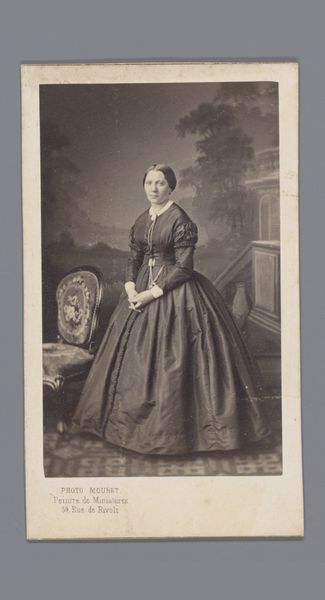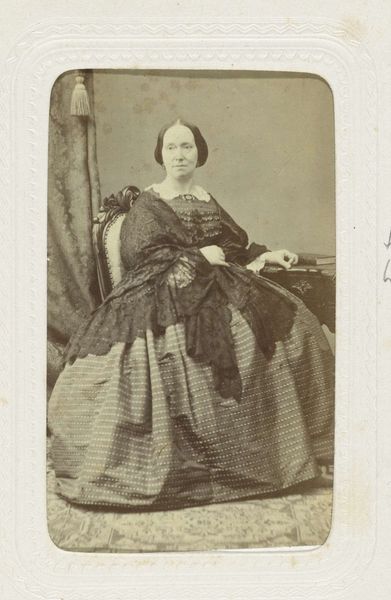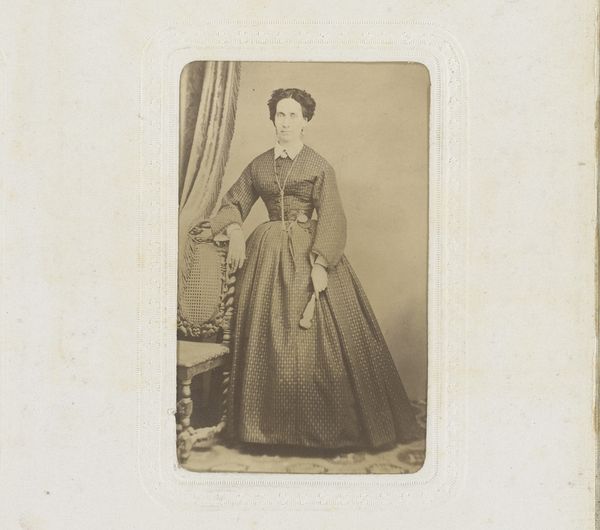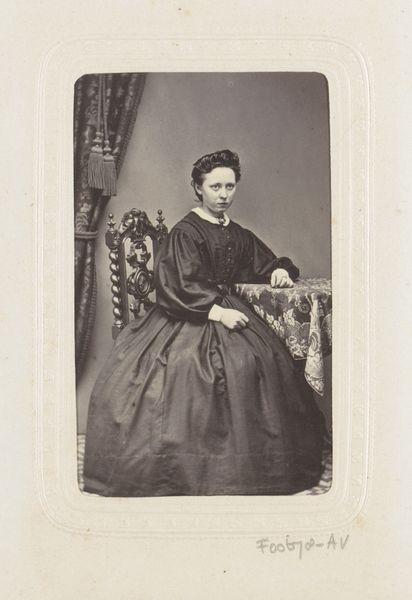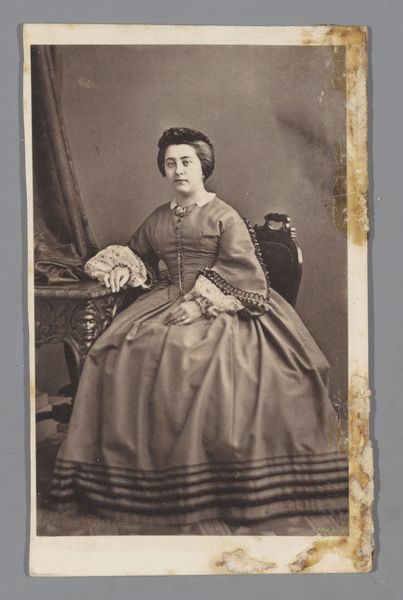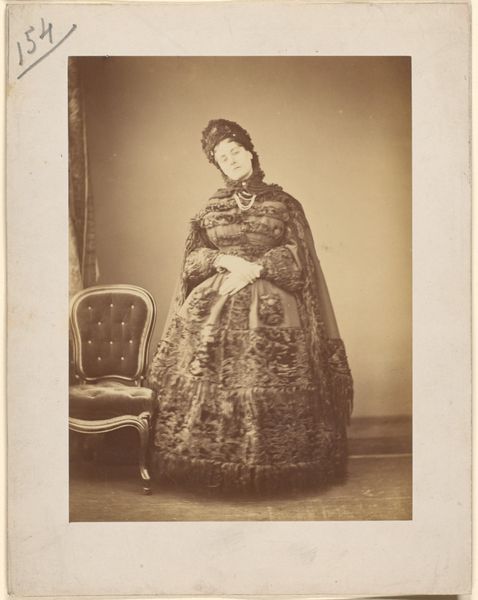
Dimensions: height 221 mm, width 174 mm
Copyright: Rijks Museum: Open Domain
Curator: I'm struck by how raw this portrait feels. It's titled "Studioportret van een vrouw, Parijs," or "Studio Portrait of a Woman, Paris," created back in 1853. It's the work of Eduard Isaac Asser, a daguerreotype, a very early form of photography. There's a realness to it that's arresting. Editor: It's definitely holding something back, wouldn’t you say? The formality of the studio contrasts dramatically with the sitter's solemn gaze and how she is positioned in relation to the other compositional elements of the shot. I’m immediately drawn to the table next to her which displays a decorative motif, something resembling leaves or perhaps peacock feathers. She doesn’t look entirely comfortable, there's tension in her posture, it lends the work an intriguing mood. Curator: I think you're spot on about the tension. This process was so new then, so laborious! Imagine sitting still for that long, under those conditions. It couldn't have been comfortable, no soft filters! But it allowed the viewer to be right there with the subject. Her ornate lace trim, puffy sleeves and patterned table covering reflect wealth and attention to detail which she might otherwise enjoy in daily life, it seems that being put on display so starkly brings out feelings of insecurity and worry in her posture and expressions. Editor: Indeed, notice how Asser strategically employs a formalist, symmetrical approach here. The woman's features are presented without artifice, and with direct gaze to give prominence and immediacy to her inner emotional state. Curator: Her hair is piled in a peculiar configuration atop her head in two sections, resembling devil’s horns! I wonder if there's a hidden bit of rebellion there. Or maybe that was just the style. But the way her gaze meets the viewer—almost daring you to judge, there’s definitely strength there too! Editor: Absolutely. The tonal range and chiaroscuro are subtle yet significant. This highlights both her form and clothing but leaves dark shadows to draw your eye upward toward her solemn, worried face. The effect suggests an inner psychological landscape beneath her calm surface and is something of a masterclass in subtle composition. Curator: Looking at it this way has made it so fresh and alive again. To think about her inner landscape existing and on display is a little voyeuristic but gives a new way of reading old portraiture. Editor: Indeed, it challenges the way we conventionally perceive and interact with early portraiture—revealing that a portrait offers more than mere reproduction.
Comments
No comments
Be the first to comment and join the conversation on the ultimate creative platform.
